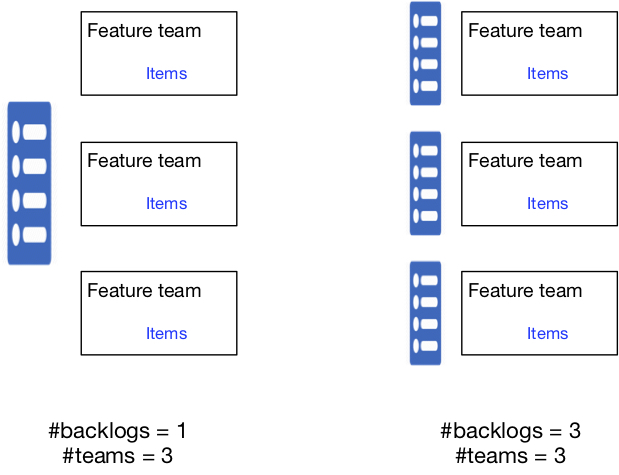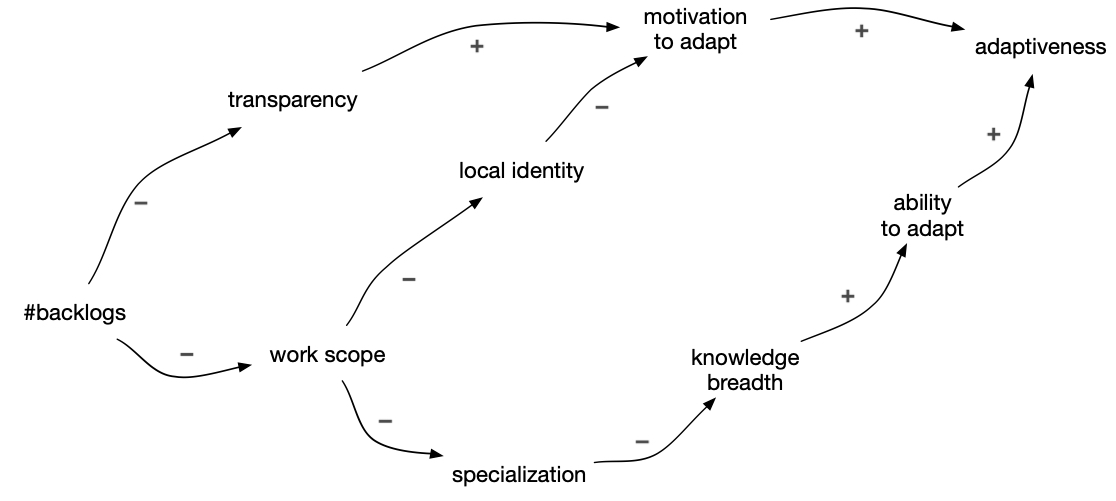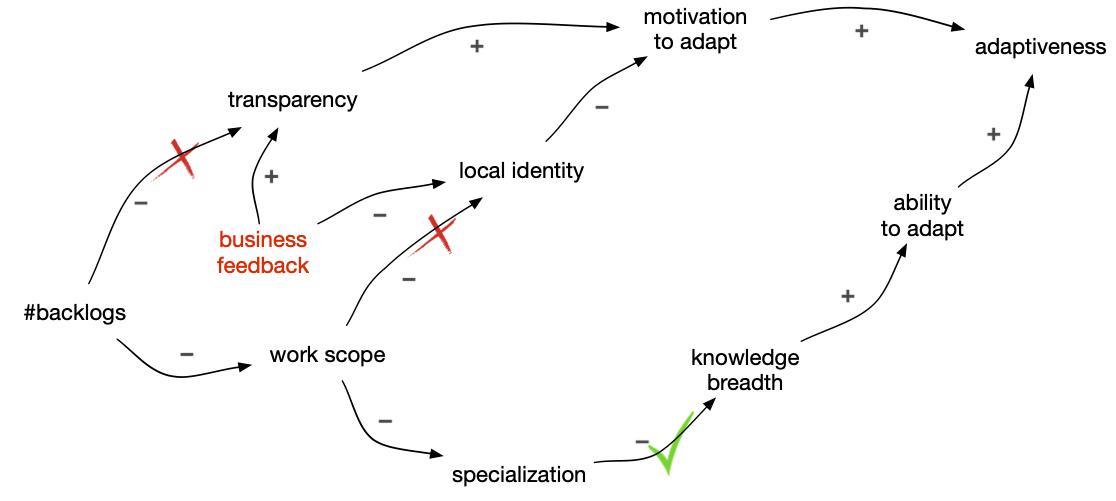(Originally published on Odd-e’s blog)
A mental model reflects an individual’s beliefs, values, and assumptions. As those are internal, we need to somehow express them in order to learn and improve. Causal Loop Diagram (CLD) is a powerful technique from Systems thinking. Models created using CLD often reflect the mental models of people creating them. We could explore different mental models by simply doing advocacy and inquiry with CLD. Balancing advocacy and inquiry is one key practice for the discipline of mental models, among the five disciplines from the classical “The fifth discipline” book.
In this article I’d like to share with you an example. It came from my CLP when we were doing system modeling for the number of backlogs and its impact on adaptiveness.

The above figure provides the setting. Suppose we have 3 feature teams for one product. We could have 1 backlog and let 3 teams share it (the left side) or we could have 3 backlogs and let 3 teams have their own backlogs (the right side). Adaptiveness means team’s capability of changing to do other higher-value work. It is affected by both the motivation and the ability to adapt.
We came up with the below CLD representing one mental model.

There were three causal paths indicating the relations between the number of backlogs and adaptiveness.
One student shared that in her organization, they had more backlogs (i.e. the case of 3 teams and 3 backlogs), but it did not seem to lead to lower adaptiveness. What happened? We then reasoned about each path and explored other possible mental models, by doing both advocacy and inquiry.
More backlogs, lower transparency, lower motivation to adapt, lower adaptiveness.
[me] Did more backlogs lead to lower transparency?
[student] What is transparency here, could you elaborate more?
[me] Transparency here means the chance of knowing the value of their work, relative to other work on the same whole product by other teams. When each team has their own backlog, teams may not know that they might be doing globally lower-value work. Does this happen in your organization?
[student] Not really. We have pretty fast feedback for our work. If one team does lower-value work, the business impact would be lower, which would be visible for them quite soon.
[me] Interesting, so, then, the motivation to adapt stays high?
[student] Yes. We are always motivated to adapt to higher-value work.
More backlogs, smaller work scope for any team, stronger local identity, lower motivation to adapt, lower adaptiveness.
[me] How about local identity? Having their own backlog limits the work scope for the team, thus the team develops stronger local identity, which demotivates them to work on any other work outside of their scope. Do you see this in your organization?
[student] Not really. It is the norm in our organization that if the business impact is low, we gotta change. Our team never sticks with the local identity. I guess this is because we are always driven by business success.
More backlogs, smaller work scope for any team, higher specialization, smaller knowledge breadth, lower ability to adapt, lower adaptiveness.
[me] How about the ability to adapt? As each team gets specialized in their work scope, their knowledge breadth gets smaller and thus decreases the ability to adapt. Do you see this in your organization?
[student] Indeed, the adaptation is always painful for the team. They are motivated to adapt, but they don’t prepare for it in terms of knowledge. We have been struggling with this.
[me] Yes, in LeSS, there is only one backlog and multi-team PBR is specially designed to maximize broad learning optimizing for the adaptiveness.
We updated the original CLD, reflecting the different mental models that we explored.

For their organization, strong reliance on business feedback increases the motivation to adapt, while the limited broad learning due to specialization decreases the ability to adapt.
One challenge in working with mental models is that they are implicit. CLD helps to express it, and doing both advocacy and inquiry on the causal links is a powerful way to explore different mental models.